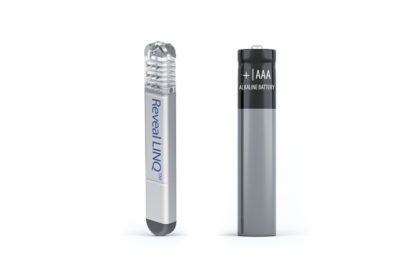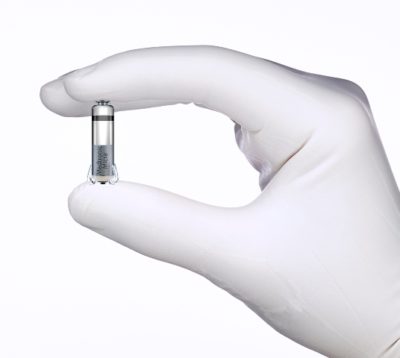
By Melicent Lavers-Sailly
Nearly a decade ago, Medtronic set out to revolutionize medical devices, to shrink them, by up to 90 percent. These implantable devices make a big difference by being incredibly small.
“We didn’t want to make them small for “small’s sake,” but to make them smaller and less invasive while providing the same or better therapy for patients,” says Paul Gerrish, director of technology at the Medtronic facility in Tempe, Arizona, where much of the miniaturization work took place.
“People were saying that we were defying the laws of physics,” recalled Mark Phelps, senior program director and a key leader of the miniaturization team. “They said it wasn’t possible.”
Using the same technology that compressed computing into the palm of your hand, micro-electronics experts in Arizona, along with designers, engineers and medical experts in Minnesota and elsewhere, found they could reinvent medical devices, using just a fraction of the space.
But these doubts proved wrong.
Thanks to micro-electronics, ultra-low-power medical devices now use less energy when turned on than a smartphone does when turned off, allowing them to be much smaller in size. Two devices that highlight the trend towards miniaturization include an insertable cardiac monitor and the world’s smallest pacemaker..
“These devices are maintaining the level of performance that we have seen in on our larger systems,” says Charles Gordon, senior design manager. “And in some ways there’s even more intelligence in them in certain aspects.”
The first of those high performing devices are beginning to reach patients.

The Reveal LINQ™ Insertable Cardiac Monitor (ICM) is a miniaturized heart monitor designed to help physicians quickly and accurately diagnose irregular heartbeats (cardiac arrhythmias), which can cause fainting or stroke. Reveal LINQ received Health Canada licence in March 2014. Currently, it is the smallest cardiac monitor available (~1 cm3) and has a 3-year battery life under normal use conditions. The first generation Reveal cardiac monitor was invented by a Canadian physician, Dr. George Klein in collaboration with Medtronic.
Each year, six per cent of Canadians over the age of 10 experience syncope, the medical term for fainting, which can result in falls or even fatal accidents. In 2014 Keeley Daley, a three year old at the time, was rushed to emergency at Janeway Children’s Health and Rehabilitation Centre in St. John’s, Newfoundland and Labrador after falling down several times that afternoon without explanation. She then received a Reveal LINQ ICM. Six days later on the morning of December 25th, 2014 Dr. Templeton received an alert on her cell phone indicating Keeley’s heart had paused. This allowed Dr. Templeton to relate the young girl’s fainting to a problem with her heart.
At just one-third the size of a AAA battery, Reveal LINQ monitors patients’ hearts, just like Keeley’s, 24 hours a day, seven days a week for up to three years, on a battery that wouldn’t last three minutes powering a lightbulb.

Medtronic has continued the deep miniaturization of their devices. In October 2016, the Medtronic Micra™ Transcatheter Pacing System (TPS) became the First Leadless Pacemaker Licenced in Canada. It is cosmetically invisible and small enough to be delivered through a catheter and implanted directly into the heart. Unlike traditional pacemakers, Micra TPS does not require leads (electrodes) or a surgical “pocket” under the skin and there are no visible signs of the device. Micra TPS responds to patients’ activity levels by automatically adjusting therapy. Currently, Micra TPS is the first and only leadless pacing system licenced for both 1.5 and 3 Tesla full-body magnetic resonance imaging scans, providing patients with continued access to these advanced imaging diagnostic procedures. Believe it or not, Micra TPS is no bigger than a large vitamin capsule.
“By making things small enough, what we’re able to do is dramatically change the procedure of how these devices are used, to make them much less invasive which is better for the patient,” says Chris Zillmer, vice president of Research and Technology.
Medtronic engineers believe it is still possible to make devices even smaller, perhaps up to ten times smaller than the miniaturized devices today. After all, we’ve done it before.
Melicent Lavers-Sailly is the PR & Corporate Communications Manager at Medtronic.

